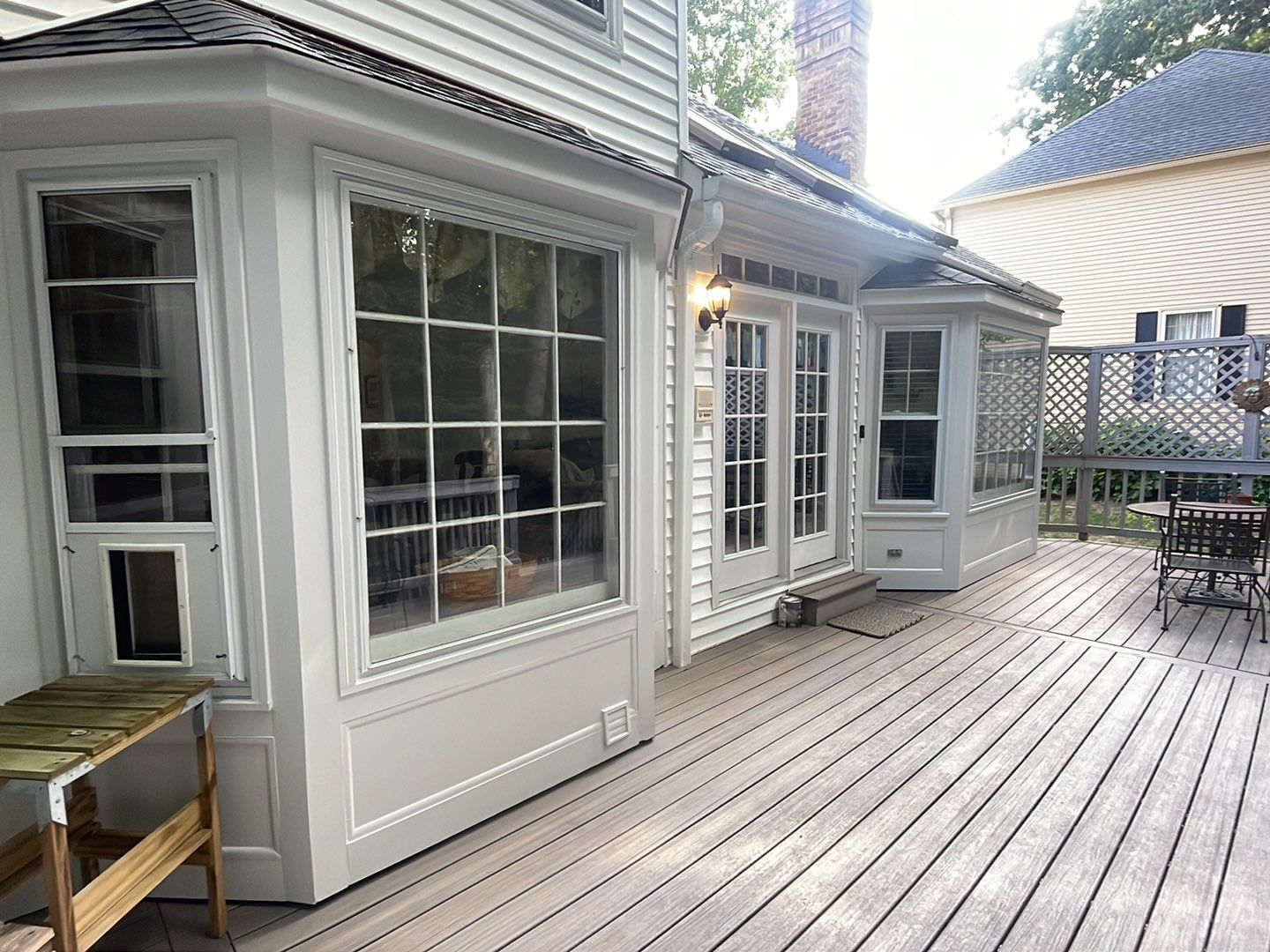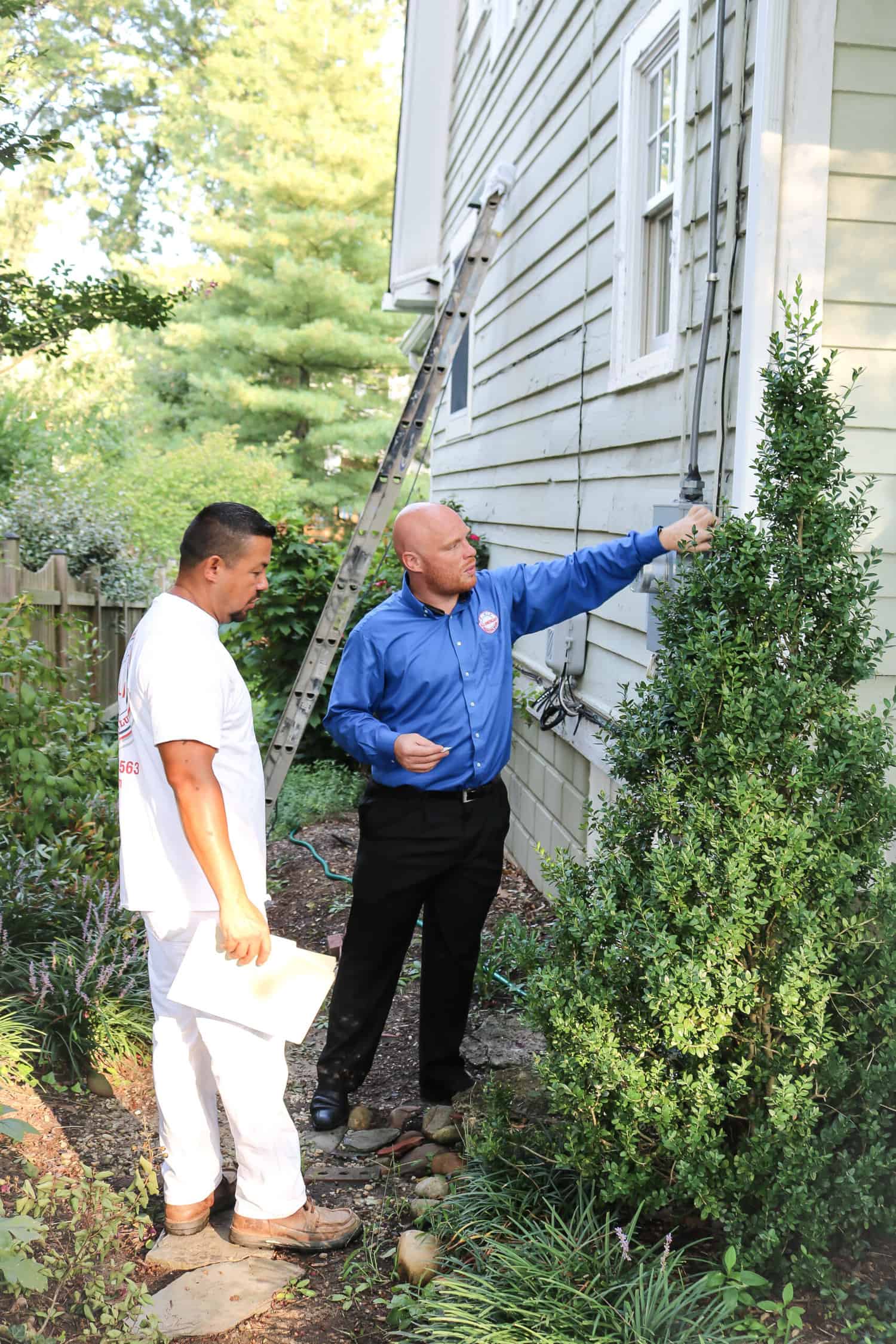Are you tired of looking at that busy wallpaper in the dining room of your Northern Virginia home? Are you upgrading your kitchen and the wallpaper has to go? Wallpaper removal can be a major pain, and it can actually cause some damage if done incorrectly.
Reston’s award-winning residential painting contractor All American Painting Plus specializes in wallpaper removal. It can be a tricky business, and if you attempt it as a DIY project you should at least be aware of the challenges you might face. By the way, when’s the last time you wielded a 4 inch broad knife?
How difficult removing wallpaper is depends largely on how it was applied in the first place. If it was put up as part of original construction and the drywall under it did not have a primer coat, the drywall is going to be damaged regardless of how careful you are removing it. If the surface under the wallpaper is painted, then chances are much of it will pull right off. The trick will be getting that part that stays stuck.
Tips from a Professional Painter on Removing Wallpaper
Removing wallpaper can be a DIY nightmare, or, if you luck out, it can be as simple as washing a wall. You will be guaranteed a nightmare if primer wasn’t used when the paper was applied. To determine if primer was used before you attempt to strip the paper, find an inconspicuous spot and lift up a small piece of the wallpaper. If the wall underneath it is grey, it’s time to call a professional painting company like All American Painting Plus because no primer was used and getting the paper off and repairing the wall will require a pro.
If you are going to tackle the task yourself, here’s a list of the gear you are going to need:
- Stepladder
- Drop cloth
- 4” putty knife
- Spray bottle or garden sprayer with hot water
- Wallpaper scorer
- Soapy water
- Rags
The first thing you want to do is protect your flooring, so put the drop cloth in place. Then lift a corner of the paper up. If it lifts off, lucky you, you “dry strip” the paper and your job becomes much easier. Try to keep your fingers as close to the wall as possible to avoid tearing. If you do tear the paper, use the putty knife to lift the paper at the tear and continue peeling.
If the paper lifts but leaves a paper backing, you will need to use your putty knife to raise the backing. If it comes up easily, you are good to go. If it doesn’t, you have some work to do.
Take the wallpaper scorer and “scrub” the wall in a circular motion. This puts small perforations in the paper. Wallpaper paste is water soluble, so you’ll want to add water. Use your sprayer to wet down the paper (but not drench it) and give it 15 minutes to work.
You should be able to remove most of the paper at this point. Some patches will be stubborn and stick to the wall. Once you get the majority off, go back to those spots and wet them down again. When all the paper is off, wash down the walls with soapy water to remove any residue. Allow the wall to completely dry before you do any interior painting.
If the wallpaper just refuses to budge, it’s time to call us. You’ll probably need a wallpaper stripper chemical and that can get nasty if you’ve never handled it before.
Myths and Options
First, fabric softener has no magical qualities when it comes to removing wallpaper. It simply adds another chemical and fumes to the mix. Steaming the paper off is an option but typically results in burns. Many pro painters won’t deal with steam. Lastly, you can paper or paint over existing wallpaper. It was a common practice decades ago. The problem arises when the quality of the installation is not what it should be and you get bumps and lumps on the surface. If you want a true wallpapering challenge, try stripping a wall that has five or six layers of paper on it.
If you want to eliminate the hassle and ensure a quality job for your home, give us a call today. We service all of Northern Virginia, from Arlington to Haymarket. Contact a professional painter now!











